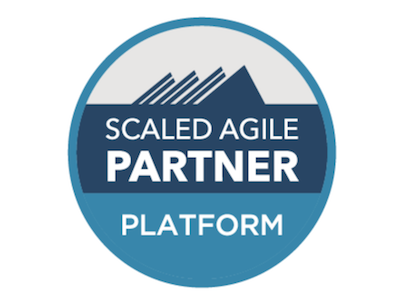Tackle SAFe resistance for smooth adoption and implementation
When companies are looking into implementing SAFe, more often than not, they are faced with SAFe resistance from within. To make the initial process as painless as possible for your organization, we've put together a plan to help you tackle SAFe resistance within your company.
Success Stories
On the Scaled Agile website, numerous success stories support the implementation of SAFe. These case studies, blog posts, and videos will help your organization establish its reasons for change and metrics for measuring the change’s success.
SAFe is a complex framework, and it is notoriously tricky to adopt. Everyone in the organization needs to be on the same page to understand why this change is taking place. It’s the leadership team’s job or Lean-Agile Change Agents to make these reasons public to the whole organization. Part of successful SAFe implementation is everyone knowing why their work is essential to the company goals and mission.
You can start benefiting from this aspect of SAFe right away by getting everyone on the same page as to why you are switching to SAFe. You can use the success stories as supporting evidence for your change. One of our favorites is the Cisco case study, where SAFe helped reduce defections by 40%.
Strong Leader Vision
In addition to providing the best case studies and data to support your change to SAFe, you should nominate a leader or leadership team who is passionate about the change itself. This person should then outline all of the benefits of the change and work closely with the Lean-Agile Change Agents to formulate an implementation plan.
Having a strong vision is crucial. The leader or leadership team needs to see the flaws in the current working processes, corrective actions to improve them, and a “north star” or perfect solution that the organization can strive towards.
Empower the Right Individuals with Training
If you are an experienced leader at your organization, chances are you know who the most suitable people are for SAFe transformation. These could be the smartest, longest-tenured, or even the most influential members of your team. In the end, they should at least be the most knowledgeable in SAFe. These expert individuals will be key players in combating resistance to SAFe adoption.
At the beginning of the SAFe Implementation Roadmap, there is a step where you must train your Lean-Agile Change Agents. At Seibert Media, we would advise you to choose these individuals carefully. Base your choice on a few characteristics:
- The ability to learn quickly
- Trustworthiness
- Influence
- Leadership within their subject matter
Once you have the team in place, make sure they get proper training. This can be from any SAFe expert that you can find. We recommend Kegon and their SAFe workshops that they offer remotely and in English. Once they complete the training, they become SAFe Program Consultants or SPCs. If they don’t get proper training, they might not be able to answer questions throughout the transition process. If they can’t answer questions throughout the transition and implementation process, members may start to doubt the process itself, which could curtail your implementation plan. Please contact us if you need any help sorting out quality SAFe training.
Career Growth Benefits
Finally, we have a benefit to every employee, which should help deter some resistance. In this day and age, it is uncommon for employees to stay at one organization for their whole careers. Twenty to thirty years ago, this was common, but now employees change jobs more than seven times on average after they are 24 years old. This means that most people will change jobs more than once in their career, and to change jobs, they will need a set of skills.
SAFe adoption is growing more and more across all industries. Job candidates with expertise and experience in SAFe environments will have an advantage moving forward. Employers do not want to spend time onboarding someone to SAFe principles and terminology. They would rather hire someone who already has these skills.
If you are someone who thinks you might not stay at the same organization for the rest of your career, then learning SAFe and all its tools could help you in your future job hunt.
Overall, you can almost certainly expect some resistance when implementing any organization-wide change. We strongly recommend that you prepare for this resistance with the following:
- Case studies and data to support reasons for the change
- A unified vision that is both strong and influential
- A strong, knowledgeable, and empathetic team in charge of the change
- Knowledge of the benefit to employees across all teams and levels in the organization
If you have prepared well for the switch to SAFe and followed the Implementation Roadmap, you should have no issues at all combating any resistance to change that you come across. In the end, tools and frameworks are only as powerful as the people that operate them. Now is the time to get after it, good luck!
SAFe in Jira: Try Agile Hive today!
Do you want to learn more about Agile Hive and how software can help you implement SAFe in your company? We'd love to discuss the requirements for agile project management across your entire enterprise with you, and demonstrate how Agile Hive works in a personal demonstration. Contact us today!
Read more about SAFe
SAFe resources to get you started right
Agile Hive: What is SAFe®?
Scaling Agile with SAFe & Agile Hive, an interview with Dr. Thorsten Janning from KEGON



